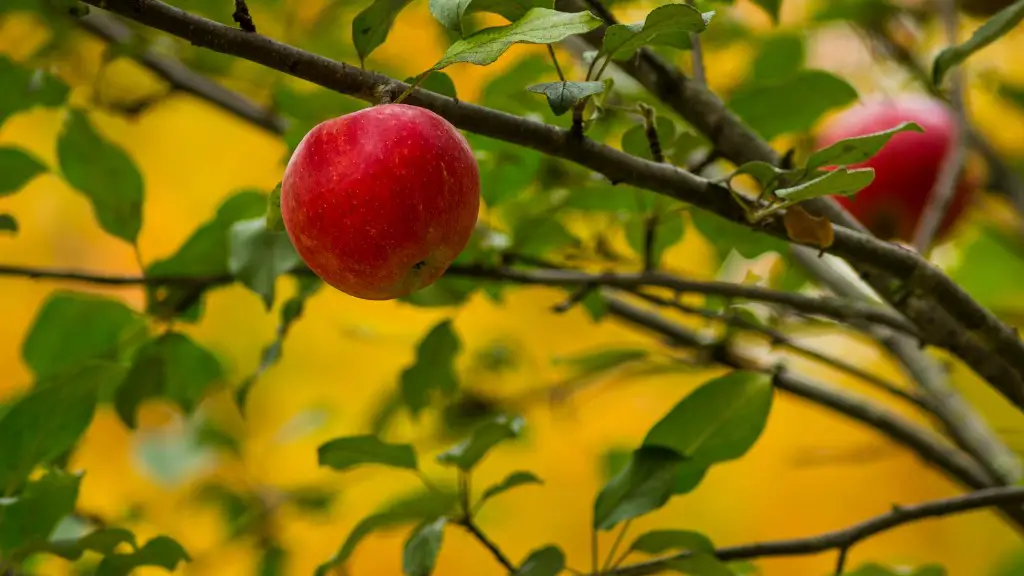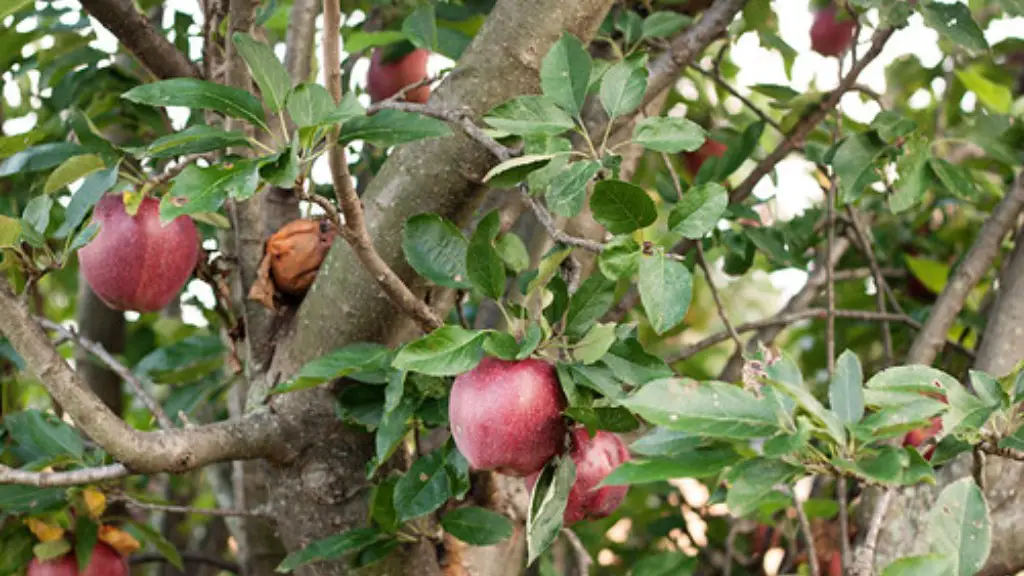Summer is the best time of the year to prune an apple tree. Pruning an apple tree during the summer months helps to control its growth and shape it for a better yield of apples. Proper tree pruning allows for optimal nutrient uptake and overall health of the tree. There are several essential steps to follow when pruning an apple tree during the summer.
Remove Dead and Diseased Branches
Strikingly, the first step in pruning an apple tree in summer is to remove any dead or diseased branches. Dead branches don’t produce new growth, so they need to be eliminated to ensure the tree’s health. If a branch no longer has any foliage and looks dry, it’s time to remove it. Diseased branches are more difficult to identify and need to be checked for signs of withering and rotting. If you notice any of these symptoms, then it’s best to take the branch off with gardening shears or pruning saw.
Remove Weak and Crossing Branches
Next, weak branches or those that rub or grow inwards need to be taken off the tree. Weak branches are easily broken off during storms and should be removed. Additionally, crossing branches should be cut back as they can cause the flowers to fail and stop fruit production. Crossing branches can be identified by their direction – if two branches are growing against each other, prune one of the branches away to allow more light to get in.
Trim Interconnected Branches
While pruning, interconnected branches, especially those that are large, need to be trimmed. Interconnected branches are those that grow together and share the same stem. Pruning these branches will help shape the tree and increase air circulation throughout the tree. Trim the branches down to a size where they don’t touch each other.
Cut off Suckers
It’s common to find suckers around the base or lower part of the apple tree. These branches are undesirable and should be eliminated to allow the apples to get more light and water. Suckers grow straight up and usually lack any leaves or buds. These branches should be cut as close to the ground as possible with a pruning saw.
Reduce the Crown
Once all the dead, diseased, interconnected and weak branches are removed from the tree, it’s time to reduce the crown. In simple terms, the crown is the top portion of the tree that has the main branches. Reducing the crown is important to ensure that the tree doesn’t outgrow its pot and cause root damage. This can be done by trimming the larger branches to a more manageable size.
Shape the Tree
Finally, take some time to shape the tree. Instead of a straight line for branches, strive for an outwardly curved shape as it creates more space for the apples to develop. Make sure to leave enough height in the center for the tree to get adequate airflow and light. Rounded shapes are better than straight or square shapes when it comes to trees.
Fertilize the Soil
When pruning an apple tree in summer, it’s important to address the soil as well. Healthy soil helps the tree take up essential minerals and nutrients needed for growth and fruiting. Adding a fertilizer to the soil around the apple tree is a good way to promote healthy growth. Choose a fertilizer that’s specific to apple trees and apply it according to the manufacturer’s instructions.
Water Regularly
Lastly, apple trees should be watered regularly during the summer months. Make sure to water the tree once a week, or more if needed depending on the weather. This will help keep the tree hydrated and producing healthy apples. Depending on the climate of your area, it may be necessary to water more frequently. Keep an eye on the soil and add water when necessary.
Consider Pruning Timing
It’s important to choose the right timing for pruning an apple tree. Pruning during the summer months helps to control the growth of the tree and increase the size of apples, while also avoiding the late frost during early spring that could damage the tree. Pruning too late in the season can also cause damage to the tree. Timing is key here and should be taken into consideration when pruning an apple tree.
Train the Branches
Training the branches of an apple tree is another great way to ensure that the tree produces more and larger apples. Training the branches helps to create an even spacing between the branches so that all the apples get an equal amount of light and airflow. This step is important for creating strong, healthy branches and a better yield of apples.
Choose the Right Tools and Supplies
Using the correct tools and supplies is essential when it comes to pruning an apple tree. Make sure to use sharp, quality tools such as pruning saws, shears and loppers to trim the tree. Also, make sure to have gloves and protective eyewear on when pruning as it can be a dangerous task. Having the right supplies on-hand can make the pruning process much easier and safer.
Check the Tree after Pruning
Once the pruning is done, it’s important to check the tree to make sure the pruning was done correctly. Look for any signs of decay or diseased branches that need to be taken off. Additionally, look for any debris or dead wood that could be clogging up the tree. Inspecting the tree after pruning is a great way to ensure that it continues to stay healthy and produce fresh apples during the summer months.



